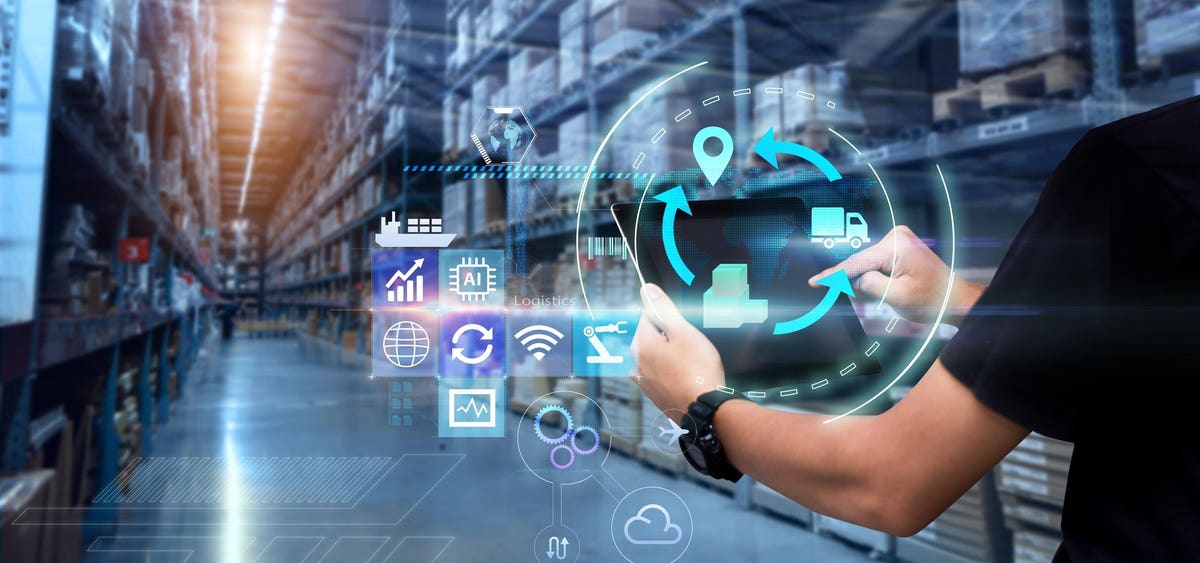The future is not about replacing humans with automation or AI but rather embracing a new reality where employees work hand in hand with AI solutions to boost productivity. This new relationship is paving the way for eliminating time-consuming tasks like spreadsheet analysis or searching through bad data across multiple systems that have long needed more resources. By leveraging AI, companies can implement new efficiencies and empower their workforce to focus on higher-value strategic initiatives. This collaboration presents opportunities for unprecedented growth and sustainability.
While no person can do everything themselves, no machine can either. Thus, labor force augmentation is an emerging benefit of AI systems that are already hard at work in many companies. As more companies start using solutions with natural language processing (NLP) capabilities and generative AI technology to help drive productivity, the opportunity to reduce human downtime in the same way manufacturing organizations view the importance of reducing asset downtime is becoming more evident.
Dr. Mark van Rijmenam theorizes in his report titled “The AI Workforce Revolution: The Augmented Future” that employing an augmented workforce alongside advanced technologies in the workplace enhances human workers’ capabilities and can transform how we live and collaborate.
“The augmented workforce is all about integrating humans and machines to work together. Human workers can perform their jobs more efficiently and effectively by leveraging advanced technologies, while machines can automate routine tasks and provide valuable data to support decision-making. This integration allows workers to focus on tasks that require human ingenuity, such as complex problem-solving and creativity, while the machines handle the more routine and repetitive tasks.”
This achievable notion may foster a more robust balance of trust between man and machine. This is the next step in our workplace evolution and connected worker experience. The potential of emerging AI tools can be revolutionary for specific industries, providing them with groundbreaking functionalities. As organizations look to integrate more AI capabilities, it’s necessary to consider the human experience and its impact on establishing trust.
Human Workforce Augmentation
For AI success in the supply chain, I’ve previously noted that there are three areas for achievement:
1) Knowledge transfer, in which your experienced workforce veterans can transfer some of their hard-earned knowledge to AI systems before they retire
2) Purpose-built systems, in which humans share responsibility for teaching the correct information to the models and algorithms, and
3) Human execution, in which humans work with AI solutions and tools to streamline the work across departments, from operations and logistics to finance and distribution.
Today’s businesses are now grasping the opportunities for how AI can significantly reduce the time required for manual data management processes. When AI can handle repetitive tasks consistently and reliably, more time is added to an employee’s day for strategic, meaningful work. As more is accomplished, productivity increases.
AI in Manufacturing Processes
A collection of examples make it clear. Let’s look at a few areas where AI systems can significantly reduce the time required for manual processes to benefit a production facility.
● Manufacturing Waste
Overproducing goods beyond demand is a significant waste in manufacturing. The way around this waste is by utilizing AI systems that can analyze historical sales data, market trends, and customer behavior to provide accurate demand forecasting. Manufacturers and suppliers who work together to leverage predictive capability can better optimize production schedules, minimize overproduction, and align their manufacturing output with near real-time demand signals.
● Inventory Management
Inefficient inventory management can lead to waste due to excess stock or stockouts. There is a lack of trust in data and information as to why people make inventory decisions they traditionally do not enter into systems. Intelligent systems can quickly compare and analyze lead times, demand variability, and production constraints to determine safety stock levels, reordering times, and replenishment strategies. This helps transfer knowledge from humans to systems so businesses avoid excess inventory and stockouts, minimizing waste and associated costs.
● Energy Consumption
Manufacturing processes often consume significant amounts of energy, and inefficient energy usage can result in waste. AI systems can monitor and analyze energy consumption patterns in real time, identify areas of high energy usage, and suggest optimization strategies. This helps businesses to optimize equipment usage and reduce overall energy waste, leading to cost savings and environmental benefits.
● Equipment Downtime
No one likes unplanned equipment downtime. It can disrupt production schedules and lead to waste. AI systems can proactively identify risks to help reduce downtime and maximize production efficiency.
● Supply Chain Optimization
AI-powered systems can analyze vast amounts of data from multiple sources, including suppliers, transportation networks, and market dynamics, to optimize supply chain operations. Deep learning AI models can optimize procurement, production, and logistics decisions by considering lead times, transportation costs, and demand fluctuations. This results in supply optimization, where inventory, sourcing, and risks are balanced to enhance overall supply chain efficiency.
Working to augment your employees with AI technology can revolutionize your supply chain operations. By harnessing the power of automation, data analytics, and real-time insights, you can reduce human downtime and achieve enhanced efficiency, improved decision-making, greater visibility, and a competitive edge in today’s dynamic business landscape.
Read the full article here





